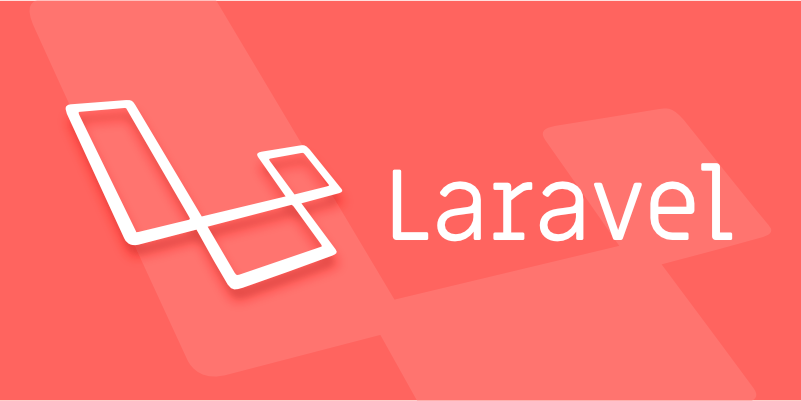The steps to create middleware in Laravel include: 1. Use the Artisan command to generate middleware and write processing logic; 2. Register middleware through global, routing grouping, or separate binding; 3. If you need to pass parameters, you can specify them in the route and receive them in the handle method; 4. The middleware is executed in the order of registration, and you need to pay attention to the order. For example, after running php artisan make:middleware CheckAge to create middleware, you can write judgment logic in the handle method, and then select the registration method according to the usage scenario. If parameters are required, they will be received through the third or above parameters. The execution order of the middleware follows the "Onion Model" to ensure that the logic flows correctly.

Creating middleware in Laravel is not complicated. It is mainly used to filter HTTP requests entering the application, such as verifying whether the user is logged in, checking permissions, etc. Middleware allows you to do some preprocessing operations before the request reaches the routing processing function. Below I will start from several common needs and explain step by step how to create and use middleware.

1. Basic methods for creating middleware
Laravel provides the Artisan command to quickly generate middleware. You just need to run it in the terminal:
php artisan make:middleware CheckAge
This will generate a CheckAge.php file in app/Http/Middleware directory. Open it and you will see a class with a handle method inside. This method receives two parameters: the current request $request and the next middleware $next .

You can make any judgment in this method, such as:
public function handle($request, \Closure $next)
{
if ($request->input('age') < 18) {
return redirect('home');
}
return $next($request);
}The meaning of this example is that if the age parameter is less than 18, it will jump to the home page, otherwise the subsequent logic will continue.

2. Several ways to register middleware
After creating the middleware, you also need to register it in Laravel to take effect.
Global Registration (Applicable to all requests)
Add your middleware class name to the $middleware array in app/Http/Kernel.php , for example:
\App\Http\Middleware\CheckAge::class,
This method is suitable for handling general logic such as cross-domain and logging.
Routing group registration (applicable to certain pages)
You can also assign middleware to specific routing groups, such as web or api in Kernel's $middlewareGroups .
Bind to a route individually
More common is to use middleware only on certain routes. You can add middleware to the route definition:
Route::get('/profile', [ProfileController::class, 'index'])->middleware('check.age');
The premise is that you must first register the alias in Kernel's $routeMiddleware :
'check.age' => \App\Http\Middleware\CheckAge::class,
3. Pass parameters using middleware
Sometimes you want the middleware to accept parameters, such as checking whether the user role is an administrator. At this time, you can write it in the route:
->middleware('role:admin')
Then in the middleware handle method, you can get this parameter:
public function handle($request, Closure $next, $role)
{
if (! $request->user()->hasRole($role)) {
return redirect('home');
}
return $next($request);
} Note: The middleware parameters start with the third parameter, the first is $request and the second is $next .
4. The order of middleware is important
Laravel's middleware is executed in the order you register. For example, you have two middleware A and B, A is in front and B is in back. Then the request will enter A, then B, and then return. This "onion model" is very critical when dealing with the front and back logic.
If you need to control the order, you can adjust their position in the Kernel $middleware array.
Basically that's it. The middleware itself is not complicated, but if used properly, it can greatly improve the neatness and reusability of the code. The key point is to understand the middleware execution process, registration method and parameter delivery method.
The above is the detailed content of How to create a middleware in Laravel?. For more information, please follow other related articles on the PHP Chinese website!

Hot AI Tools

Undress AI Tool
Undress images for free

Undresser.AI Undress
AI-powered app for creating realistic nude photos

AI Clothes Remover
Online AI tool for removing clothes from photos.

Clothoff.io
AI clothes remover

Video Face Swap
Swap faces in any video effortlessly with our completely free AI face swap tool!

Hot Article

Hot Tools

Notepad++7.3.1
Easy-to-use and free code editor

SublimeText3 Chinese version
Chinese version, very easy to use

Zend Studio 13.0.1
Powerful PHP integrated development environment

Dreamweaver CS6
Visual web development tools

SublimeText3 Mac version
God-level code editing software (SublimeText3)
 Working with pivot tables in Laravel Many-to-Many relationships
Jul 07, 2025 am 01:06 AM
Working with pivot tables in Laravel Many-to-Many relationships
Jul 07, 2025 am 01:06 AM
ToworkeffectivelywithpivottablesinLaravel,firstaccesspivotdatausingwithPivot()orwithTimestamps(),thenupdateentrieswithupdateExistingPivot(),managerelationshipsviadetach()andsync(),andusecustompivotmodelswhenneeded.1.UsewithPivot()toincludespecificcol
 Sending different types of notifications with Laravel
Jul 06, 2025 am 12:52 AM
Sending different types of notifications with Laravel
Jul 06, 2025 am 12:52 AM
Laravelprovidesacleanandflexiblewaytosendnotificationsviamultiplechannelslikeemail,SMS,in-appalerts,andpushnotifications.Youdefinenotificationchannelsinthevia()methodofanotificationclass,andimplementspecificmethodsliketoMail(),toDatabase(),ortoVonage
 Strategies for optimizing Laravel application performance
Jul 09, 2025 am 03:00 AM
Strategies for optimizing Laravel application performance
Jul 09, 2025 am 03:00 AM
Laravel performance optimization can improve application efficiency through four core directions. 1. Use the cache mechanism to reduce duplicate queries, store infrequently changing data through Cache::remember() and other methods to reduce database access frequency; 2. Optimize database from the model to query statements, avoid N 1 queries, specifying field queries, adding indexes, paging processing and reading and writing separation, and reduce bottlenecks; 3. Use time-consuming operations such as email sending and file exporting to queue asynchronous processing, use Supervisor to manage workers and set up retry mechanisms; 4. Use middleware and service providers reasonably to avoid complex logic and unnecessary initialization code, and delay loading of services to improve startup efficiency.
 Managing database state for testing in Laravel
Jul 13, 2025 am 03:08 AM
Managing database state for testing in Laravel
Jul 13, 2025 am 03:08 AM
Methods to manage database state in Laravel tests include using RefreshDatabase, selective seeding of data, careful use of transactions, and manual cleaning if necessary. 1. Use RefreshDatabasetrait to automatically migrate the database structure to ensure that each test is based on a clean database; 2. Use specific seeds to fill the necessary data and generate dynamic data in combination with the model factory; 3. Use DatabaseTransactionstrait to roll back the test changes, but pay attention to its limitations; 4. Manually truncate the table or reseed the database when it cannot be automatically cleaned. These methods are flexibly selected according to the type of test and environment to ensure the reliability and efficiency of the test.
 Choosing between Laravel Sanctum and Passport for API authentication
Jul 14, 2025 am 02:35 AM
Choosing between Laravel Sanctum and Passport for API authentication
Jul 14, 2025 am 02:35 AM
LaravelSanctum is suitable for simple, lightweight API certifications such as SPA or mobile applications, while Passport is suitable for scenarios where full OAuth2 functionality is required. 1. Sanctum provides token-based authentication, suitable for first-party clients; 2. Passport supports complex processes such as authorization codes and client credentials, suitable for third-party developers to access; 3. Sanctum installation and configuration are simpler and maintenance costs are low; 4. Passport functions are comprehensive but configuration is complex, suitable for platforms that require fine permission control. When selecting, you should determine whether the OAuth2 feature is required based on the project requirements.
 Implementing Database Transactions in Laravel?
Jul 08, 2025 am 01:02 AM
Implementing Database Transactions in Laravel?
Jul 08, 2025 am 01:02 AM
Laravel simplifies database transaction processing with built-in support. 1. Use the DB::transaction() method to automatically commit or rollback operations to ensure data integrity; 2. Support nested transactions and implement them through savepoints, but it is usually recommended to use a single transaction wrapper to avoid complexity; 3. Provide manual control methods such as beginTransaction(), commit() and rollBack(), suitable for scenarios that require more flexible processing; 4. Best practices include keeping transactions short, only using them when necessary, testing failures, and recording rollback information. Rationally choosing transaction management methods can help improve application reliability and performance.
 Handling HTTP Requests and Responses in Laravel.
Jul 16, 2025 am 03:21 AM
Handling HTTP Requests and Responses in Laravel.
Jul 16, 2025 am 03:21 AM
The core of handling HTTP requests and responses in Laravel is to master the acquisition of request data, response return and file upload. 1. When receiving request data, you can inject the Request instance through type prompts and use input() or magic methods to obtain fields, and combine validate() or form request classes for verification; 2. Return response supports strings, views, JSON, responses with status codes and headers and redirect operations; 3. When processing file uploads, you need to use the file() method and store() to store files. Before uploading, you should verify the file type and size, and the storage path can be saved to the database.
 Asynchronous Task Processing with Laravel Queues
Jul 13, 2025 am 03:00 AM
Asynchronous Task Processing with Laravel Queues
Jul 13, 2025 am 03:00 AM
Laravelqueueshandlenon-immediatetaskslikesendingemailsorsyncingdatabyprocessingtheminthebackground.Tosetup,chooseaqueuedriver—syncforlocaldevelopment,redisordatabaseforproduction,withRedispreferredforhigh-volumeapps.Usephpartisanqueue:tableandmigrate






